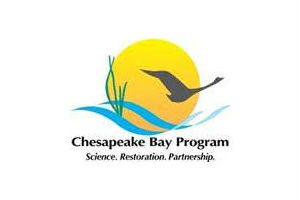
Although the 62,169 acres of underwater grasses observed in 2020 have increased from the 38,958 acres noted during the first survey in 1984, it is a 20 percent decrease from the current 10-year average of 78,168 acres.
The preliminary acreage observed in 2020 is a 42 percent decline from 2018 when it was estimated that the Bay may have supported up to 108,078 acres of underwater grasses. While this is a staggering decrease, the loss from 2019 to 2020 was only 7 percent, suggesting that overall, underwater grass beds are beginning to stabilize after a difficult past few years.
In 2020, the largest decline in terms of total area — an estimated 5,684 acres — was again observed in moderately salty waters, particularly in the Tangier Sound, but also in the Eastern Bay, the mouth of the Choptank River and in the Little Choptank River.
These losses are largely attributed to the continued decline in widgeon grass, which fluctuates from year-to-year as the species responds rapidly to impacts from extreme weather and changes in water quality.
Underwater grass abundance can vary from species to species and river to river. In 2020, local highlights included:
- Upper Eastern Shore (Maryland): In 2020, the Sassafras River lost most of the new grasses that it had gained in 2019, decreasing from 406 acres to 169 acres. Similarly, the Chester River lost nearly 900 acres of grasses from 2019 to 2020, dropping from 1,616 acres to 734 acres.
- Middle Chesapeake Bay: Although underwater grass acreage in Virginia’s portion of Tangier Sound decreased substantially from the previous year, the abundance of grass beds in Maryland’s portion of Tangier Sound actually increased from 4,315 acres in 2019 to 4,725 acres in 2020. In the nearby Manokin River, underwater grass acreage increased from 583 acres in 2019 to 696 acres in 2020. The Little Choptank River, also in the middle of the Bay, decreased from 1,503 acres in 2019 to 550 acres in 2020 due to the loss of most of its widgeon grass.
- Northern Maryland: Underwater grass abundance in and around the Susquehanna Flats region increased from 8,497 acres in 2019 to 9,194 acres in 2020. Additionally, the Northeast River increased from 87 acres in 2019 to 109 acres in 2020.
- Washington, D.C.: Underwater grass abundance in the Anacostia River continued its resurgence and increased from 48 acres in 2019 to 53 acres in 2020.
- Mid-to-Lower Chesapeake Bay: In the Virginia portion of the mid-to-lower Bay, underwater grass abundance did particularly well in the Potomac and Rappahannock rivers, as well as in Mobjack Bay. The Potomac River increased from 6,631 acres in 2019 to 7,534 in 2020, while the Rappahannock, including the Corrotoman River, increased from 1,789 acres in 2019 to 2,204 acres in 2020. In Mobjack Bay, underwater grass acreage increased from 5,027 acres in 2019 to 7,080 in 2020.
To learn more about the progress toward achieving and sustaining 185,000 acres of underwater grasses Bay-wide, visit ChesapeakeProgress.










